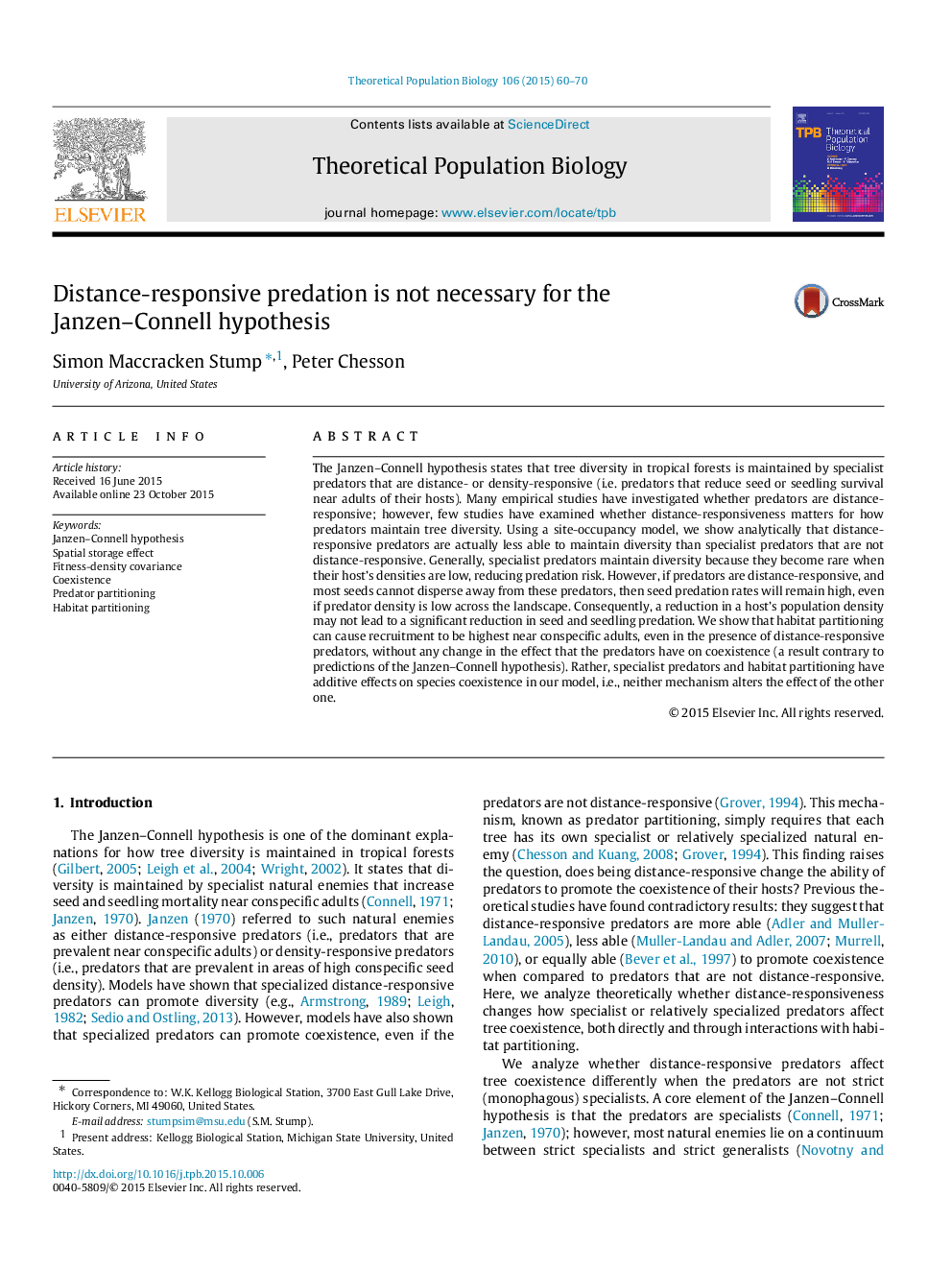| کد مقاله | کد نشریه | سال انتشار | مقاله انگلیسی | نسخه تمام متن |
|---|---|---|---|---|
| 4502309 | 1624146 | 2015 | 11 صفحه PDF | دانلود رایگان |
The Janzen–Connell hypothesis states that tree diversity in tropical forests is maintained by specialist predators that are distance- or density-responsive (i.e. predators that reduce seed or seedling survival near adults of their hosts). Many empirical studies have investigated whether predators are distance-responsive; however, few studies have examined whether distance-responsiveness matters for how predators maintain tree diversity. Using a site-occupancy model, we show analytically that distance-responsive predators are actually less able to maintain diversity than specialist predators that are not distance-responsive. Generally, specialist predators maintain diversity because they become rare when their host’s densities are low, reducing predation risk. However, if predators are distance-responsive, and most seeds cannot disperse away from these predators, then seed predation rates will remain high, even if predator density is low across the landscape. Consequently, a reduction in a host’s population density may not lead to a significant reduction in seed and seedling predation. We show that habitat partitioning can cause recruitment to be highest near conspecific adults, even in the presence of distance-responsive predators, without any change in the effect that the predators have on coexistence (a result contrary to predictions of the Janzen–Connell hypothesis). Rather, specialist predators and habitat partitioning have additive effects on species coexistence in our model, i.e., neither mechanism alters the effect of the other one.
Journal: Theoretical Population Biology - Volume 106, December 2015, Pages 60–70
